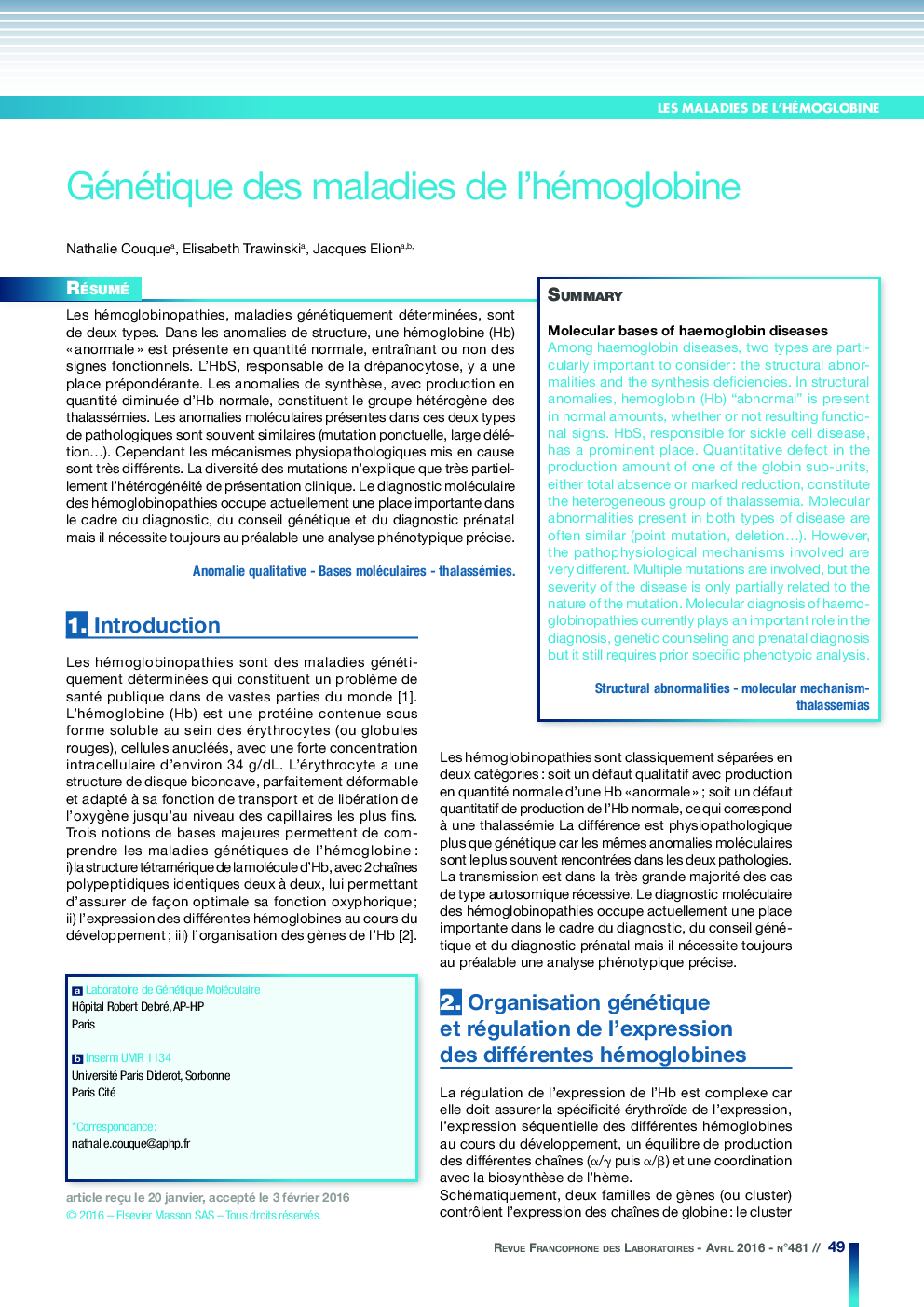| Article ID | Journal | Published Year | Pages | File Type |
|---|---|---|---|---|
| 7646424 | Revue Francophone des Laboratoires | 2016 | 12 Pages |
Abstract
Among haemoglobin diseases, two types are particularly important to consider: the structural abnormalities and the synthesis deficiencies. In structural anomalies, hemoglobin (Hb) “abnormal” is present in normal amounts, whether or not resulting functional signs. HbS, responsible for sickle cell disease, has a prominent place. Quantitative defect in the production amount of one of the globin sub-units, either total absence or marked reduction, constitute the heterogeneous group of thalassemia. Molecular abnormalities present in both types of disease are often similar (point mutation, deletion...). However, the pathophysiological mechanisms involved are very different. Multiple mutations are involved, but the severity of the disease is only partially related to the nature of the mutation. Molecular diagnosis of haemoglobinopathies currently plays an important role in the diagnosis, genetic counseling and prenatal diagnosis but it still requires prior specific phenotypic analysis.
Related Topics
Physical Sciences and Engineering
Chemistry
Analytical Chemistry
Authors
Nathalie Couque, Elisabeth Trawinski, Jacques Elion,
